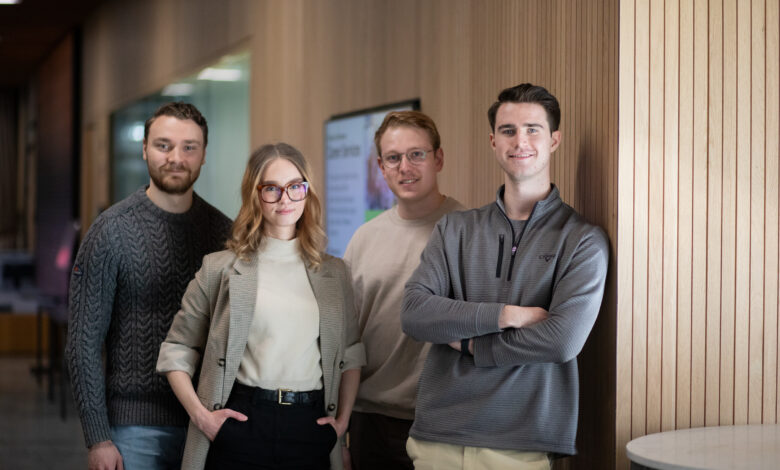
The built environment is a major source of global emissions, accounting for around 40 per cent of the global total. That includes the construction, maintenance, and demolition of buildings.
So, reducing emissions from construction companies will be an important step in the planet’s journey towards net-zero goals by the mid-21st century.
Artificial intelligence already has the potential to play a key role in these endeavours, and the technology is developing at a rapid pace, creating the potential for further uses as models become ever more advanced.
AI could optimise supply chains
Despite being one of the world’s largest traditional industries, construction has lagged behind many others in embracing digitalisation. Yet, AI adoption could benefit companies by helping them to optimise resource consumption and streamline their supply chain workflows.
AI-driven analytics could create predictive models that forecast a construction project’s material needs more accurately. This would prevent over-ordering, saving the firm costs while also reducing waste and minimising environmental impact.
Of course, some waste will inevitably be generated. Overall, estimates by the European Commission suggest that the construction and demolition industry generates more than a third of all waste the EU produces.
AI could help firms track the amount and type of waste they generate and identify opportunities to recycle or reuse some materials.
This could be especially important for deconstruction projects. If AI is used in the building information models in the construction phases of a project, this would improve the accuracy of information, which machine learning models could use to assist in the planning stage. This would ensure structures are taken down as efficiently as possible, and reusable materials are salvaged for future projects.
In these ways, AI could help to boost operational efficiency at multiple points along the supply chain. Businesses that embrace these possibilities will become leaner and more cost-efficient, combining productivity with delivering on sustainability commitments.
Opportunities for innovation
The possibilities of AI have created new spaces in the construction sector for tech startups that can assist companies in harnessing the power of rapidly developing digital tools.
My own company, Complink, is one such example. The organisation was co-founded by myself and three other students, forming an interdisciplinary group from Aalto University School of Business, the School of Science, and the School of Arts, Design, and Architecture.
Through combining our different fields of study, we were able to develop software solutions for construction firms that utilise AI alongside architectural and engineering models to match projects with the most suitable products. This helps to optimise procurement and logistics on job sites, saving on costs, time, and emissions.
As companies rapidly look to integrate AI solutions, it is likely that this gap in the market for startups able to produce software solutions tailored to the needs of specific sectors will continue to grow.
Growing roles for AI
McKinsey’s annual Global Surveys on AI found that 2023 was a breakout year for the growth of digital tools that harness the power of generative AI (GenAI), and by 2025, businesses are starting to make organisational changes to deploy these tools across a range of business functions.
This is little wonder for the construction industry, which desperately requires tools to boost efficiency.
Indeed, research by Christopher Görsch, a senior scientist at Finnish tech company VTT and Visiting Researcher at Aalto University, finds that up to 80 per cent of operations on construction sites do not contribute to productive work.
According to Görsch, one of the main reasons for this is a lack of coordination and continual interruptions. He suggests workers’ movements could be tracked so tasks can be assigned more efficiently.
Automated data collection is one of the areas in which AI excels, so this could be a novel way to use the technology that will enable companies to complete construction projects in much quicker time without compromising on thoroughness.
Aside from supply chain optimisation and staff management, AI’s analytical functions could be employed in site monitoring and hazard prediction. AI could analyse sensor data to monitor site pollution levels and other environmental hazards, creating predictive analytics to ensure the safety of workers and the environment.
This data would not just enable AI to contribute to hazard detection, but could also lead to AI assistance in ensuring the company operates in compliance with regulations.
With new measures brought into force in recent years, such as the EU’s Corporate Sustainability Reporting Directive, companies face additional pressures to ensure their operations are as green as possible. So, AI monitoring could be a valuable source of data collection that will help to manage transitions towards more sustainable business models.
Focusing on shared value
The breadth of options for deploying AI in the construction sector is evidence that there is a growing need for digital tools.
From a business standpoint, tailored software solutions powered by AI have immense potential to assist companies by ensuring compliance with international sustainability regulations, protecting the safety of workers, and improving both time and cost efficiency.
By allowing construction companies to harmonise their productivity and socio-environmental responsibilities, AI empowers the industry to create “shared value”.
Developed by economist Michael E. Porter, the concept of shared value means finding a way to create economic value that also benefits society by addressing its needs and challenges.
In this way, AI presents not just a pathway towards greater efficiency for firms in the construction industry, but a step towards a more sustainable existence for societies around the world.





